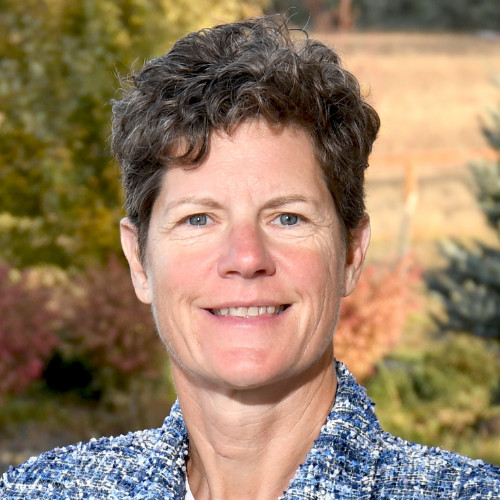In healthcare, it may be that two heads are better than one – especially when faced with a crisis such as the COVID-19 pandemic. In our complex healthcare environments, the concept of leaders partnering together to co-lead enterprises, medical groups, service lines and/or departments has gained considerable traction in the last decade. According to the Medical Group Management Association’s 2019 poll of 1,303 healthcare leaders, 77% utilize a physician and administrator dyad leadership model.
Dyad partnerships consist of two leaders with different skills sets and experiences collaborating to co-lead their organization. The dyad model creates a significant advantage over the traditional single leader hierarchical structure. Dyads create synergy, where the strength of two leaders working together is greater than their strengths operating solo (Source: Dyad leadership Healthcare, Sanford and Moore).
Whether the dyad model consists of a physician leader partnered with an administrative leader or a clinical leader partnered with an operations leader, it will only be a success with careful selection of dyad leaders as well as clearly defined roles, responsibilities and expectations of collaboration. Typically, the physician and/or clinical leader oversees quality of care and patient care standards, clinical innovation, medical management and clinical pathways and provider relations. The administrative and/or operations leader, on the other hand, typically oversees business operations, finance, human resources, information technology and capital planning.
The two leaders also collaborate on critical responsibilities such as setting direction, establishing strategy and culture, positioning the organization, managing organizational performance and managing crisis. Their specific management roles and oversight, along with their overlapping leadership responsibilities is where the power of the dyad is generated. Each leadership role has disciplined scoping and explicit delineating of responsibility. The most effective dyads delineate roles and do not duplicate work; rather, they are advocates and supporters of each other (Source: Better together: Most healthcare leaders report using a dyad leadership model, Comstock).
This structure and associated efficiencies may be why dyads have an advantage in meeting the challenges of the COVID-19 crisis and its impact on healthcare organizations. Since the pandemic, the healthcare landscape has intensified and so has the role of leadership.
I work with Julie Gernetzke, Market Vice President of Operations at CHI Health Clinic and The Physician Network in Omaha Nebraska, who uses the dyad model as a healthcare leader. She shared with me the rapid challenges COVID-19 posed to her role and how the dyad model helped her navigate the crisis.
“The speed and significance of the new demands created a challenging situation for us as leaders – there’s no way we could have tackled this work in isolation,” Gernetzke said. “We needed our diverse expertise coming together to make decisions rapidly.”
Through their dyad structure throughout CHI Health Clinic and The Physician Network, Gernetzke and her co-leader Dr. Randy Pritza, Chief Medical Officer, began tackling issues together and were unified from the moment the pandemic first hit U.S. health systems. Her team was able to synthesize information from the CDC, health departments, governmental agencies, their own organization, competitors, patients and families. They needed both clinical and administrative expertise to understand all the information coming in for efficient decision making and action.
The dyad model allows leaders to make quick decisions in tandem and amplify those decisions to their broader teams and community. Implementing a strong dyad model before a crisis hits is crucial. Crises often happen overnight, and there is usually little to no warning to prepare. Gernetzke said the time her team put into developing the dyad model over the past couple years paid off when the pandemic hit. They were able to quickly implement new ways of doing business and deliver care across their network.
“Due to our dyad model, our dialogue around the pandemic challenges started from a deeper place. We were able to address issues head-on with critically diverse perspectives. Our existing dyad leadership model provided the foundation for us to trust each other and make changes quickly. We were already ‘in sync’ and able to keep moving forward as a unified team,” Gernetzke said.
The pandemic brought with it many challenges specific to healthcare such as massive burnout from employees working non-stop and increased fear from working with a highly contagious disease on a daily basis. Gernetzke shared how helpful the dyad model was with managing uncertainty and fear. Her shared commitment with her dyad partner carried her through the exhausting and uncertain times. She knew she had a strong support system behind her and wasn’t making decisions alone.
“Our culture has changed largely from our response to the pandemic challenges and our ability to come together and work as a team,” Gernetzke said “We plan to keep many of our new processes and practices in place to preserve what we learned through our pandemic response.”
In extreme circumstances, dyad leadership offers a powerful solution to leadership roles that are too complex for any one professional to fulfill. A dyad ensures that a full array of leadership skills are employed to address challenges and navigate change across disciplines and organizations. As illustrated by Gernetzke’s experience with the dyad model in a crisis, a developed dyad leadership team can prove invaluable to respond efficiently and effectively to rapidly changing situations. In essence, dyad leadership brings the best of two worlds together to create a balanced team and to ensure the best possible outcomes.
Sources:
- Comstock N. “Better together: Most healthcare leaders report using a dyad leadership model.” MGMA STAT. October 31, 2019
- Stanford, K. & Moore S. (2015). Dyad Leadership in Healthcare: When One Plus One is Greater than Two. Philadelphia, PA: Wolters Kluwer.



